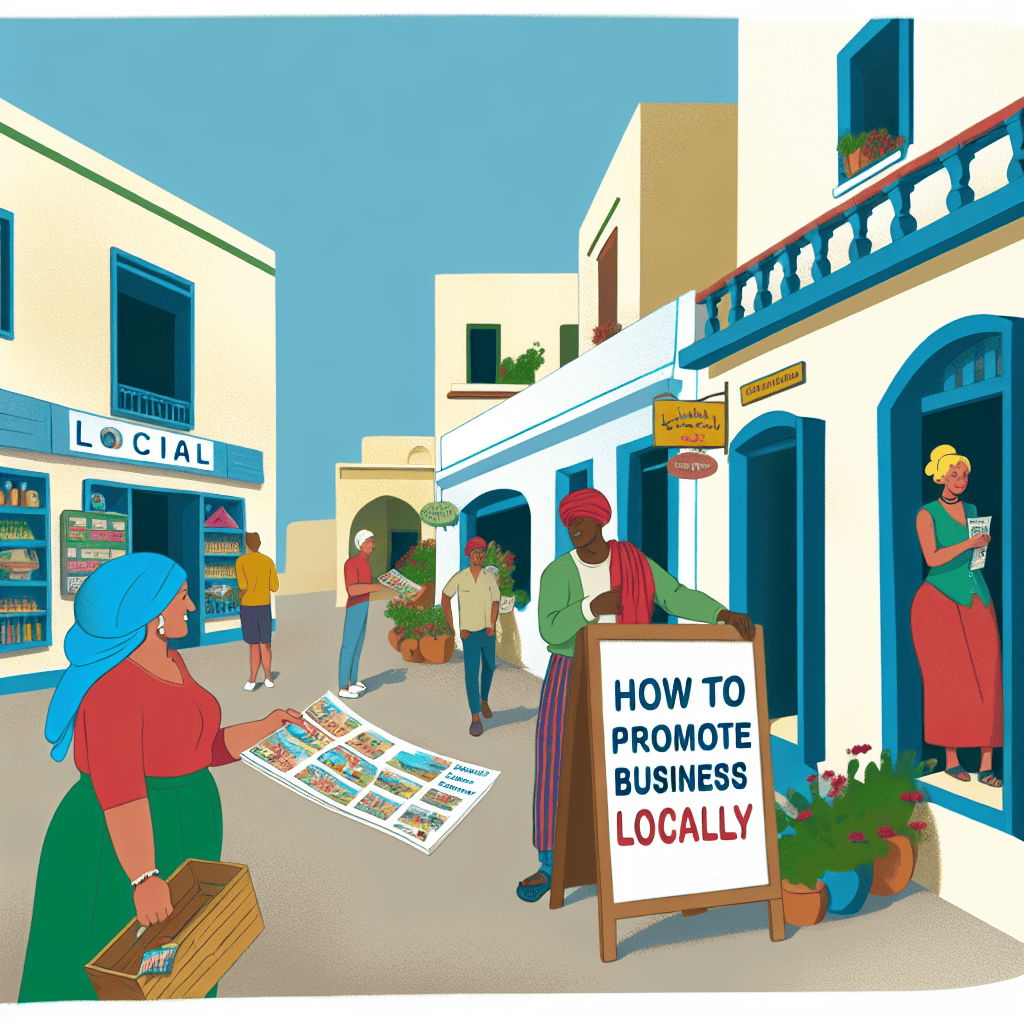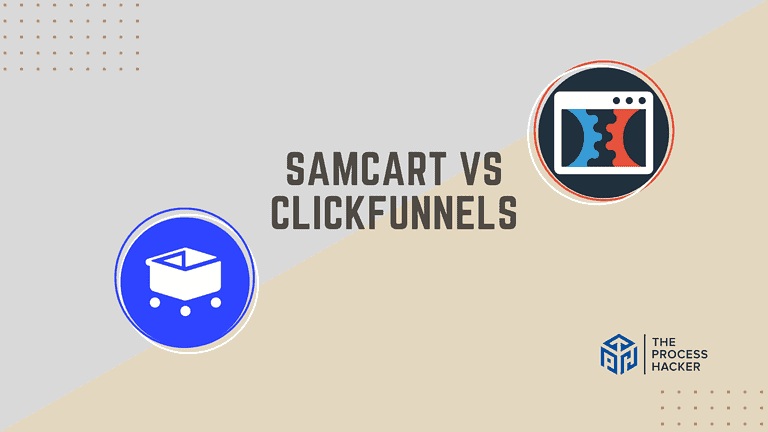How to Promote Your Business Locally: A Small Business Owner’s Guide
Feeling like your local business needs to be noticed? You’re not alone. In today’s digital world, standing out and attracting new customers is harder than ever.
But don’t worry—there’s hope! You can use proven strategies to get your business noticed and increase traffic. This guide will walk you through the latest and most effective tactics for local business promotion.
We’re about to dive deep into practical tips, from harnessing the power of social media to building strong community relationships. By the end of this guide, you’ll have a clear action plan to supercharge your local marketing efforts.
What is Local Business Promotion?
Local business promotion involves targeted strategies that attract customers within your geographical area. It’s about building awareness and fostering relationships within your community so that customers choose your business over competitors. Think of it as cultivating a loyal fan base right in your neighborhood.
Today, the importance of local marketing cannot be overstated. As communities rebound and reshape from global events, your ability to connect directly with local consumers offers a competitive edge.
This approach enhances your visibility and strengthens community ties, creating a network of support and loyalty that drives repeat business. With a well-executed local marketing strategy, you can establish your business as a cornerstone of your local economy and culture.
Why You Should Master Local Business Promotion
Mastering local business promotion is not just about getting your name out there; it’s about creating an impactful presence within your community that translates to real business growth. Let’s explore how refining your local promotion strategies can substantially benefit your small business:
- Increased visibility in your community: People will recognize your brand and associate it with the products or services they need.
- Higher conversion rates from local customers: Local leads are more likely to convert into paying customers because they’re already in your vicinity.
- Improved customer loyalty and repeat business: Building relationships with local customers fosters loyalty and encourages them to return repeatedly.
- Cost-effective marketing with high ROI: Local promotion often yields better results for less investment than broad national campaigns.
This approach is designed to leverage traditional and innovative marketing channels to solidify your presence in the community and drive sustainable success.
How to Promote Your Business Locally: The Ultimate Strategy
As the marketplace becomes more saturated and competitive, finding effective ways to stand out locally can make the difference between thriving and surviving. Whether launching a new product, seeking to increase organic traffic, or expanding your local market share, this strategy is your roadmap to success.
Let’s break down the steps to optimize your local business presence, starting with one of the most crucial tools at your disposal.
Step 1: Optimize Your Google Business Profile
Your Google Business Profile is your digital storefront on Google Search and Maps. It’s often the first impression potential customers have of your business, making it crucial for local SEO (search engine optimization).
Optimizing your profile involves
Optimizing your profile involves more than just filling in the blanks. It’s about presenting your business in the best possible light, making it easy for potential customers to find you, and encouraging them to take action.
Complete all information fields
This may seem basic, but you’d be surprised how many businesses neglect this crucial step. Ensure your business name, address, phone number, website, and hours of operation are present, accurate, and up-to-date. Inconsistent or outdated information can frustrate potential customers and harm your online reputation.
Add high-quality photos and videos
Visual content is king in today’s digital landscape. Showcase your products, services, and team through high-quality photos and videos that capture the essence of your brand. This will make your profile more engaging and help potential customers visualize what you have to offer.
Encourage and respond to customer reviews
Positive reviews are like gold for local businesses. They build trust, credibility, and social proof. Actively encourage satisfied customers to leave reviews and respond to all feedback, both positive and negative. This shows you value your customers’ opinions and are committed to providing excellent service.
Use Google Posts to share updates and offers
Google Posts are a great way to keep your audience informed and engaged. Share timely updates about new products, promotions, or events. This will help you stay top-of-mind with your audience and attract more traffic to your business.
By optimizing your Google Business Profile, you increase your chances of appearing in local search results, Google local services ads, and Google Maps local business listings, making it easier for potential customers to find and connect with your business.
Step 2: Dominate Local Search with SEO
Local SEO is optimizing your online presence to attract more business from relevant local searches on Google and other search engines. It’s about ensuring your business shows up when people in your area are searching for the products or services you offer.
Here’s how to dominate local searches with targeted SEO strategies:
Optimize for Local Keywords
Start by identifying keywords that local customers are using to find services or products like yours. To capture geographically specific searches, include city names, neighborhood details, and local landmarks in your keywords.
- Keyword Research is Key: It is crucial to understand the specific terms and phrases people in your local area are using to search for businesses like yours. Tools like Google Keyword Planner or Semrush can help you identify popular local keywords.
- Location-Specific Targeting: Incorporate your city, neighborhood, or even specific landmarks in your keyword strategy. For instance, instead of just targeting “best pizza,” aim for “best pizza in [your city]” or “pizza near [landmark].” This specificity helps you connect with the right audience.
- On-Page Optimization: Once you’ve identified your local keywords, strategically integrate them into your website’s content, meta tags, and image alt text. Remember to maintain a natural flow and avoid keyword stuffing.
Create Location-Specific Pages on Your Website
If you serve different areas, consider creating separate pages for each location. This improves SEO and tailors the content to the local audience, making it more relevant and engaging. Each page should include location-specific services, offers, and geographical references that resonate with the local clientele.
- Personalized Experience: If your business serves multiple locations, dedicated pages for each area can enhance the user experience. Each page can feature localized content, testimonials, and contact information, demonstrating your commitment to serving that particular community.
- SEO Benefits: Search engines favor websites with relevant, location-specific content. These dedicated pages help you rank better for local searches, increasing your visibility to potential customers in those areas.
- Call-to-Action: Include clear calls to action on each location-specific page, encouraging visitors to take the next step, whether it’s making a purchase, booking an appointment, or visiting your store.
Build Local Backlinks
Backlinks from reputable local sources, such as business associations, local news websites, and other local businesses, can significantly boost your SEO efforts. These links help establish your business’s credibility and relevance to a local audience.
- Quality Over Quantity: Focus on building backlinks from reputable websites with a local focus. These could be local business directories, community organizations, news outlets, or blogs.
- Natural Link Building: To earn organic backlinks, actively participate in your community, sponsor local events, or collaborate with other businesses.
- Monitor and Manage: Regularly check your backlink profile using tools like Google Search Console or Ahrefs to identify and disavow any low-quality or spammy links that might harm your SEO.
Ensure NAP (Name, Address, Phone) Consistency Across the Web
Your business’s Name, Address, and Phone number should be consistent wherever they appear on the internet, from your website to social media profiles and directory listings. Discrepancies can confuse potential customers and negatively impact your local search rankings.
- Avoid Confusion: Maintaining consistency in your business’s Name, Address, and Phone number across all online platforms prevents confusion for potential customers and search engines.
- Local Citations: Manage your local listings on major online directories like Yelp, Google My Business, and industry-specific platforms. Ensure your NAP information is accurate and consistent across all listings.
- Local SEO Tools: Utilize tools like Moz Local or BrightLocal to monitor and manage your local citations, helping you identify and rectify any inconsistencies.
Integrating these local SEO tactics will significantly enhance your visibility and ensure that when local customers search for products or services you offer, your business stands out as the go-to choice in the community.
Step 3: Leverage Social Media for Local Engagement
Social media is a powerful tool for connecting with your community and building relationships with potential customers. But it’s not just about being present on every platform; it’s about strategically choosing the platforms where your local audience is most active.
Not all social media platforms will be right for your local business. Identify where your potential customers spend their time. For instance, if you’re targeting a younger demographic, Instagram and TikTok might be more effective. Facebook and LinkedIn could be better choices for a more general or professional audience.
Here’s a table summarizing well-known social media platforms, their target audiences, and strategies to leverage them for local business promotion better:
| Social Media Platform | Target Audience | Strategies to Leverage |
| Broad demographics, especially 25-45 year olds | Engage through groups, targeted ads, and local community pages. | |
| Young adults, particularly 18-34 year olds | Use visually appealing content, stories, and influencer partnerships. | |
| Wide range, especially news-focused users 18-49 | Engage in real-time discussions, use hashtags, and host Twitter chats. | |
| TikTok | Primarily Gen Z and younger millennials | Create viral content, utilize challenges, and leverage trending sounds. |
| Professionals across various industries | Network professionally, publish articles, and use targeted ads. | |
| Predominantly women aged 25-45 | Utilize boards for project inspirations and lifestyle content. | |
| Snapchat | Teens and young adults aged 15-25 | Use fun, quick, engaging content to connect with a younger audience. |
This table focuses on each platform’s audience and how you can effectively engage them to promote your local business.
Other Strategies for Local Social Media Success
- Share Local Content and News: Post about local events, celebrations, and news that resonate with your community. This shows your involvement and investment in the area and increases your content’s relatability.
- Use Location-Based Hashtags: Incorporate hashtags that are popular in your area or specific to your locality. This makes your posts more discoverable to those exploring local content, helping you attract attention from nearby users.
- Engage with Other Local Businesses and Influencers: Build relationships with local entities by sharing their content, tagging them, and engaging in local online communities. This increases your visibility and roots your business within the local network.
- Run Location-Specific Ads and Promotions: Google ads are not the only way to advertise. Social media platforms offer powerful tools for targeted local advertising. Use these tools to run promotions exclusively available to your local community, which can drive foot traffic and increase local sales.
Step 4: Harness the Power of Local Influencers
Micro-influencers, individuals with a smaller but highly engaged following within a specific niche or location, have become increasingly influential in local marketing. These individuals often have strong connections with their audience and can authentically promote your business to their followers.
How to Find and Collaborate with Local Influencers
Start by searching for influencers who already engage with your target demographic or share interests aligned with your business. Tools like Instagram’s search function, local hashtags, or influencer marketing platforms can help you identify potential candidates.
Approach potential influencers with clear, professional proposals that outline what you can offer them (such as free products, services, or payment) and what you expect in return. Ensure that the partnership offers value to both parties.
Work with influencers to create genuine content that reflects the local vibe. This could include showcasing them visiting your business, using your product daily, or participating in local events.
It’s crucial to track the effectiveness of your influencer collaborations. Use metrics such as engagement rates, traffic to your website, and conversion rates to evaluate the impact of your campaigns and adjust strategies as needed.
Step 5: Participate in Local Events and Sponsorships
Engaging with your community through local events can dramatically boost your local profile. It demonstrates your commitment to the community’s welfare, enhancing customer loyalty and trust.
Additionally, these activities can provide valuable networking opportunities with other local businesses, potentially leading to partnerships and collaborative projects.
1) Sponsor Local Sports Teams or Events
Consider sponsoring a youth sports team, a local marathon, or a community sports event. Many local residents will notice your logo on jerseys, banners, or event programs.
Offering discounts or special promotions for participants and their families can further incentivize attendance and generate buzz around your business. You can even set up a booth at the event to interact directly with potential customers, distribute promotional materials, and create a memorable experience.
2) Host or Participate in Charity Events
Aligning your business with local charities can enhance your brand’s image and demonstrate social responsibility. Whether you host your own event or join an existing one, it’s a chance to give back and connect with your community on a deeper level. In addition to raising funds or awareness for a worthy cause, these events can provide networking opportunities and attract media attention, further boosting your business’s profile.
3) Offer Workshops or Classes Related to Your Business
If your business specializes in a particular area, offering free or low-cost workshops can attract people interested in your field while showcasing your expertise. This can be particularly effective for businesses like art studios, tech shops, cooking schools, or fitness centers. These sessions build your reputation as an expert and encourage community members to become regular customers or clients who are invested in your products or services.
4) Attend Local Business Networking Events
These gatherings are a goldmine for connecting with other local business owners, learning from their experiences, and finding new opportunities. Regular attendance can establish you as a committed and proactive business community member. These events are also excellent platforms to showcase new products, share business cards, and even find partners for future collaborations, which can be instrumental in scaling your business locally.
Step 6: Implement a Local Content Marketing Strategy
Creating content that reflects the local environment, issues, and events helps to establish your business as an integral part of the community. It increases relevance and relatability and improves SEO for local searches, driving more organic traffic to your website from the area.
Here are some of the local content you can try to create to implement a local content marketing strategy:
Blog Posts About Local Issues or Events
Writing about what’s happening in your community shows that your business is active and engaged with local happenings. Gone are the days when you only use local newspapers to help you disseminate information. These could be posts about local festivals, changes in regulations, or developments impacting the community.
Delving into these topics not only informs but also connects you to your audience in a more meaningful way. You could include interviews with local leaders or behind-the-scenes looks at local events to provide additional value and depth to your content.
Location-Specific Landing Pages
These pages can be tailored to the needs and interests of new and existing customers from different parts of your service area. They might include local testimonials, special offers, and information on local services, helping to boost SEO and conversion rates for specific locations. By optimizing these pages for local keywords and integrating maps and local contact details, you can enhance the user experience and make your business more relevant and accessible to local customers.
Customer Success Stories from Local Clients
Sharing stories of how your products or services have positively impacted local clients can build trust and credibility. These testimonials or case studies highlight your commitment to satisfying local needs and the tangible benefits you bring to customers.
You can enhance these stories with photos, videos, and detailed accounts of customer challenges and how your business provided effective solutions, making the content more engaging and persuasive.
Local Business Spotlights and Collaborations
Partnering with other local businesses for joint content initiatives can broaden your reach and strengthen community ties.
Whether it’s a guest blog exchange, a joint event, or simply spotlighting local enterprises, these collaborations can create a supportive business network and enhance community goodwill. Highlighting local suppliers, featuring co-hosted webinars, or creating collaborative promotions are great ways to leverage mutual strengths and drive local engagement.
Step 7: Utilize Email Marketing for Local Customers
This involves adapting your email content to align closely with the interests, culture, and needs of your local customer base. This personal touch can significantly enhance the recipient’s engagement and response rates, as the content feels more relevant and timely.
Effective local email marketing can dramatically boost engagement by making your communications feel more personalized and relevant to each segment of your audience. By focusing on location-specific strategies, you can enhance the relevance of your messages, increase customer loyalty, and drive higher conversion rates.
Here are some best practices to enrich your local email marketing efforts:
#1) Segment Your List by Location
Use customer data to segment your email list based on geographic location. This allows you to target your communications more precisely, sending specific messages that are relevant to the audiences in different areas.
This segmentation can also help in reducing unsubscribes, as recipients receive content that is more applicable to their needs and interests. You might consider tailoring your messaging around local issues, events, or weather conditions that could influence purchasing behavior.
#2) Send Location-Specific Offers and Promotions
Tailor your offers and promotions to match the local area’s events, holidays, or preferences. For instance, if a local holiday is approaching, you could send out a special promotion that resonates with local traditions or celebrations.
This approach enhances the relevance of your offers and demonstrates your business’s involvement and respect for local culture, potentially boosting customer engagement and brand loyalty.
#3) Share Local News and Events
Include information about local events or news that might affect or interest your potential customers. This will keep your content fresh and engaging and position your business as a community hub.
Your emails can help foster a stronger connection with your community by being a source of valuable information, encouraging more frequent opens and clicks, and deepening customer relationships.
#4) Personalize Content Based on Local Preferences
Go beyond using the customer’s name by incorporating local weather conditions, local sports team victories, or other local information to make the email content feel more personalized and relevant. This level of personalization can greatly enhance the recipient’s engagement with your emails.
For example, mentioning a local sports team’s recent win in your email’s opening can create an immediate, positive connection with your readers, increasing the likelihood that they’ll engage with the rest of your content.
By implementing these strategies, your email marketing can become a powerful tool for fostering stronger relationships with local customers, driving engagement and sales.
Key Considerations for Successfully Promoting Your Business Locally
To ensure your local promotion efforts are both effective and sustainable, several key considerations need to be kept in mind:
Regular and consistent messaging helps to build brand recognition and trust within your local community. Consistency in your promotional activities, messaging, and customer interactions ensures that your local audience understands your brand identity and values.
While online strategies are crucial, offline engagements such as in-person events, local print advertisements, and community networking can significantly enhance your visibility and credibility. A balanced approach ensures that you reach all segments of your local market.
To refine and improve your strategies, it’s essential to track the effectiveness of your local marketing efforts. Metrics such as foot traffic, website visits from local IPs, sales data, and customer feedback should be monitored to gauge the impact of your promotions and make necessary adjustments.
Taking it to the Next Level: Expanding Your Local Reach
Once you’ve established a successful local marketing foundation, the next step is to scale these efforts:
Tailor your successful strategies to new locations by understanding and adapting to the local demographics and culture of each new area. Implement scalable systems and processes to maintain quality and consistency across all locations.
Use the data and insights gained from successful local promotions to inform broader marketing strategies. Success stories and case studies can be powerful tools in broader campaigns and help attract new markets.
Collaborative promotions or co-sponsored events can expand your reach and reinforce community connections. Partnerships can provide shared resources and increased visibility, benefiting all involved parties.
Alternatives to Traditional Local Business Promotion
Innovation in local marketing can differentiate your business and capture the attention of new segments of your local market:
Exploring Innovative Local Marketing Channels
Exploring innovative local marketing channels is a strategic way to differentiate your business and engage more deeply with your local community. By leveraging unique, technology-driven methods alongside more personalized engagement strategies, you can create compelling, memorable content and campaigns that resonate with local audiences.
Here’s how to enhance and expand on some cutting-edge local marketing channels:
Local Podcast Advertising
Sponsor or advertise on podcasts that are popular in your area or that cater to a specific local audience. This can increase your reach within niche markets.
This strategy allows you to tap into the established trust and loyalty that podcast hosts have with their listeners, offering a more intimate and direct form of engagement. Consider sponsoring segments that align with your business values or products or even initiating a branded podcast series that addresses local issues or interests.
Geo-fencing and Location-Based Mobile Marketing
Use technology to send marketing messages to mobile devices within a specified geographic area. This method ensures that your promotions are highly targeted and relevant. With geo-fencing, you can tailor your messages based on the exact location of your audience—whether they’re near your store or a related event—increasing the likelihood of conversion.
You can also integrate this strategy with local events or sales, sending timely promotions when customers are most likely to be nearby and ready to engage.
Virtual and Augmented Reality Experiences for Local Customers
Create immersive experiences that can transform the way customers interact with your products or services locally, providing a novel and engaging way to capture local interest. This could involve virtual tours of your business, augmented reality setups in local parks or squares that showcase your products, or even interactive games that lead customers to your store.
These technologies not only generate buzz but also provide customers with a memorable, interactive way to learn about what you offer.
Weighing the Pros and Cons of Alternative Promotion Methods
While these innovative approaches can offer unique advantages, they may also involve higher costs, technological investments, or a learning curve both for your team and your customers. Assess the potential ROI and customer response before fully integrating these methods into your marketing strategy.
Final Thoughts on Promoting Local Businesses
Promoting local businesses requires a blend of traditional tactics and innovative strategies tailored to the community’s unique dynamics. As we’ve explored, leveraging local content, engaging in community events, and utilizing location-based technologies can profoundly impact how a business is perceived and embraced locally.
The key lies in building genuine connections—whether through sponsoring local sports, partnering with charities, or simply celebrating local culture and successes in your marketing efforts. Additionally, adapting to the digital preferences of the local populace, such as through targeted email marketing or immersive virtual experiences, can keep your business relevant and competitive.
Ultimately, the most successful local business promotion strategies are those that resonate on a personal level, turning local residents into loyal customers and vocal advocates for your brand. By consistently applying these practices, businesses can not only thrive but also contribute positively to the vitality and identity of their communities, ensuring mutual growth and sustained engagement.







